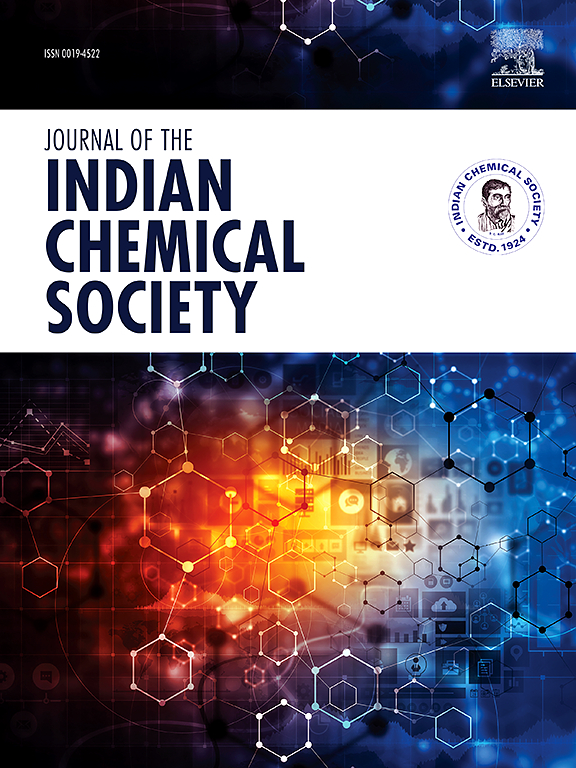Electron transfer oxidation kinetics of copper (II) catalyzed reaction between lysine and HCF (III): An experimental and theoretical approach
IF 3.2
4区 化学
Q2 CHEMISTRY, MULTIDISCIPLINARY
引用次数: 0
Abstract
Extensive research has been conducted on the copper (II) catalyzed oxidation reaction between lysine and hexacyanoferrate (III) in basic media. The equation kobs = a + b[OH−] describes how the medium affects this reaction, which has first-order kinetics for both reactants and Cu (II). As the ionic strength rises, so does the rate of reaction. The thermodynamic and activation parameters were precisely ascertained by applying the Arrhenius and Eyring equations. A thorough spectral analysis was used to establish the outcome products during reaction. Using Taft's and Swain's multiparametric equations, which provide light on solvent effects, the behavior of the reaction in different organic solvents was also investigated.
Remarkably, Kamlet-Taft's solvatochromic parameters (α, β, π∗) and the rate constants exhibited a substantial association, underscoring the important influence of solvent characteristics on reaction kinetics. Nevertheless, it was discovered that the reaction constants were not significantly affected by solute-solvent interactions.
Density Functional Theory (DFT) computations at the B3LYP/6–311∗g (d,p) level further confirm the reaction mechanism that has been hypothesized based on the kinetic observations. The suggested mechanism is strongly supported by the computational results, which demonstrate a significant correlation between the activation energy barriers and the reactivity trends shown in the kinetic studies.

铜(II)催化赖氨酸和HCF (III)反应的电子转移氧化动力学:实验和理论方法
在碱性介质中对铜(II)催化赖氨酸与六氰高铁酸盐(III)氧化反应进行了广泛的研究。方程kobs = a + b[OH−]描述了介质如何影响该反应,该反应对反应物和Cu (II)都具有一级动力学。随着离子强度的增加,反应速率也随之增加。应用Arrhenius方程和Eyring方程精确地确定了热力学参数和活化参数。采用全面的光谱分析确定了反应产物。利用Taft’s和Swain’s多参数方程,研究了反应在不同有机溶剂中的行为。值得注意的是,Kamlet-Taft的溶剂致变色参数(α, β, π *)与反应速率常数有显著的相关性,说明溶剂特性对反应动力学的重要影响。然而,我们发现溶质-溶剂相互作用对反应常数没有显著影响。密度泛函理论(DFT)在B3LYP/ 6-311 * g (d,p)水平上的计算进一步证实了基于动力学观测所假设的反应机理。计算结果有力地支持了这一机制,表明活化能势垒与动力学研究中显示的反应性趋势之间存在显著的相关性。
本文章由计算机程序翻译,如有差异,请以英文原文为准。
求助全文
约1分钟内获得全文
求助全文
来源期刊
CiteScore
3.50
自引率
7.70%
发文量
492
审稿时长
3-8 weeks
期刊介绍:
The Journal of the Indian Chemical Society publishes original, fundamental, theorical, experimental research work of highest quality in all areas of chemistry, biochemistry, medicinal chemistry, electrochemistry, agrochemistry, chemical engineering and technology, food chemistry, environmental chemistry, etc.

 求助内容:
求助内容: 应助结果提醒方式:
应助结果提醒方式:


